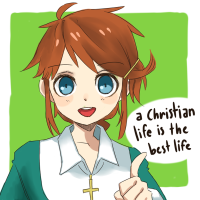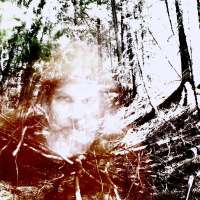Georgian Lessons #2: Orthodox Observations

Tsminda Sameba, the Holy Trinity Cathedral, rising above the city like a golden crystal. (As seen at night from the terminal of the funicular railway in Tbilisi, Georgia April 2016.)
My next Georgian lesson comes in a very different manner from the first. Although I had come to understand the cultural heritage of Georgia, it soon became clear to me that in order to make sense of Georgia’s many points of artistic creativity I needed to investigate the place of the Christian Church in the country. Like Poland Christianity plays a big part in the life of the people. Like Poland the Church was the glue holding the society together and giving an essence at odds with Communism. Much of Europe has shed its Christian roots in favor of some more contemporary definition of self and society. But like Poland Georgia has clung to its faith.

Icons in a beauty salon.
But unlike Poland the Church wasn’t an obvious catalyst for change during the Soviet era. For one thing Georgia was actually subsumed under the Soviet Union itself for historical reasons which would take too long to explain here. While Poland was dragged behind the Iron Curtain at much later date. The Soviets actually tried to destroy as many churches as they could. And Georgian homeboy Joe Stalin made sure that this task was carried out thoroughly. But as in periods of Muslim invasion and occupation Georgia seemed to have been denuded of Christians and then as soon as the pressure eased suddenly there were Christians everywhere. So when the 1991 coup came the Georgians were the first to bolt for independence after their own period of intense struggle culminating in the bloody 1989 April 9th tragedy, all of which most non-Georgians have never heard of. Immediately the Georgian Orthodox Church became a strong force within country again and they started rebuilding ruined churches.

Laying a flower in commemoration of the 19 women who died on April 9th 1989.
And so I was arriving in what was essentially a peaceful island caught between the Scylla of the Middle Eastern eruptions not too distant and the Charybdis of Russian/Ukrainian tensions not much further north. I arrived in Tbilisi to research music, dance and puppetry. But soon it became clear to me that it would be important to go to church to make sense of this unusual country.
Georgia (Sakartvelo) is an Eastern Orthodox Christian country. Statistics for the country range between 83 and 80 percent of Georgians being members of the Georgian Apostolic Autocephalous Orthodox Church. Autocephaly means being independently governed and not under another Patriarch of the Greek or Russian Orthodox Church. That means what the aging Catholicos, Ilia II, is the head of the Georgian Orthodox Church without any outside interference. You see the distinctive architecture of the Georgian Orthodox churches everywhere. And since independence they have also constructed the largest church in Georgia, and one the largest Orthodoxes churches in the world, the Tsminda Sameba Cathedral სამების საკათედრო ტაძარში (Holy Trinity Cathedral), often just called Sameba by the locals. Sameba can be seen easily rising above the city in the night from the mountains next to Tbilisi.
As I strolled around Tbilisi, dodging traffic, through the crowds, feeling the sweat of a warmer season on its way, I often passed Orthodox churches. They always seemed to have people coming and going. A baby christening might take place on a Wednesday afternoon. People walked by, some crossed themselves. Some might kneel before entering a church. One young woman stopped on a bridge nowhere near a church and made a cross. The only church in sight was off in the distance. I entered a couple of churches as I had more tentatively back 2000 in Romania. People bowed before icons, even kissed them. A normal working man wearing jeans and a plaid shirt walks into one church. Soon he is prostrate on the ground in the middle of the pewless church. I understood all of these gestures as acts of faith in a manner different than anything I had quite seen before. I sat off in corner as a visitor observing what I didn’t really understand.

People with babies waiting to be christened during a normal weekday afternoon.
The more I researched music I realized how important it was to attend to a serious service to hear Georgian liturgical singing. (Tinatin Gurchiani later apologized that she could not get me into see a Georgian priest and music expert before my departure.) And so I determined I would go to Tsminda Sameba on the last Sunday of my trip. It would require some planning to get there on time. Or so I thought.
Now I have been to many different kinds of Christian churches. I’ve been to Anglican High Church and folksy Roman Catholic Masses. I’ve been to churches so dead you’d need an EKG to detect a pulse. And I’ve been to Pentecostal churches where the preacher was rockin’ the organ and shouting “C’mon y’all look like you’ve been hit over the head by a dead wet possum!” I’ve been to African-American churches of various stripes and styles great music and bad and to Jesus People Godstock gatherings in the hills of California replete with acoustic guitars and roasted lambs on spits. I could go on, but I think you get the idea. I wasn’t the casual visitor without a clue. I knew enough about Orthodox doctrine to realize that the icons weren’t idols and that the rules would be different. But how different didn’t occur to me until I arrived at what I thought would be a little late at Tsminda Sameba Cathedral.
And truthfully when to arrive presented me with my first conundrum. I’m coming from a culture where church starts almost exactly on time. If the sign outside the church or on the website says 10am or 11am. That’s when it starts. Period. Hard as I looked on line for when Sunday services start at Sameba or any Georgian Orthodox Church the more befuddled I became. Finally I saw one person on Trip Advisor who had written ‘Go at 9 in the morning.’ Of course they wrote to go then. They didn’t exactly say that’s when things start. So at 8:00 I left my friendly and quiet guesthouse and strolled out to the metro to find my way to the church. My first clue that things were a little peculiar in Georgia was that the streets were as quiet as 5am in New York City on a Monday might be. That is hardly a soul was on the streets at all. This was the first time I’d been on the streets before 10:00 since I’d arrived a few weeks earlier. The metro was quiet. Hardly anyone looked like they might be going to church. And when I arrived at the subway exit I found myself mystified by the bus schedule and so decided to walk the last couple of kilometers up the hill to the cathedral.

Soldiers guarding Sameba? No I saw them inside a few minutes later.
As I walked up the initial stairs onto the cathedral grounds I noticed only a few people going towards the grand building. Maybe I was late? I decided to follow them. I walked through a grand room that had been a burnt out from a fire that left it dark and eerie. I followed the few people through a set of glass and brass doors into the main structure. I could hear the angelic voices of women singing somewhere up ahead of me. I entered a large chamber that felt as if I was under the main floor. I found myself on a terrace within the large room looking down one floor from a cement and marble balcony upon a congregation in the middle of a service that seemed like it had been going on for sometime and that had no specific focus. And everyone was standing, except for some occasional soul who would be on a chair nowhere near the center of the pewless floor. In Orthodox tradition sitting is considered resting and you do not rest in church. I descended to the lower floor to find people engaged in various points of attention. Some were stationed before icons. Some were awaiting the return of a priest with the communion host. A group of five ordinarily dressed women in headscarves were off to the side and would occasionally singing another short exquisitely haunting song in Georgian harmony. There was from what I could tell no congregational singing. I eventually moved back upstairs, after climbing the stairs further to find that the larger main room of the cathedral did not seem too busy, to watch from above to try to get an idea about what I was watching.

Worshipers awaiting the Priest with the Host downstairs at Sameba. In the middle left of the photo there are five women singing exquisite mysterious church songs. (One has a red scarf.) In the top left a man is kneeling by himself and others are in different places behind him.
Eventually a priest came from behind a closed door with the Eucharist which he personally dispensed only to those who had been waiting. Eloquent blessings seemed to follow each supplicant. After a while I could see he was calmly talking to that specific cluster. But he seemed to make no larger speech to the entire congregation. And during all of this at certain moments the heavenly music of the women ascended out from floor. It was deep, overwhelming and mysterious and so very different from any other service I’d ever been to. I eventually wandered out again. The service continued. More people were arriving. I passed through the blackened chamber, down the stairs, down the hill again towards the metro pondering all the while.

Passing through the immense burnt out chamber in Tsminda Sameba.
And I was struck by so many thoughts, thoughts that reflected back to the core of Georgian society and ultimately contrasted so strongly with ours.
(But to find out what those observations were you’ll have to return for Georgian Lesson #3 here at The Anadromous Life. And you’ll want to even if you have no interest in God or religion.)
Byrne Power
Haines, Alaska
10/23/2016
You can read about my full journey to Tbilisi in Georgia here:







Pingback: Georgian Lessons #1: Expectation Vs. Reality | The Anadromous Life